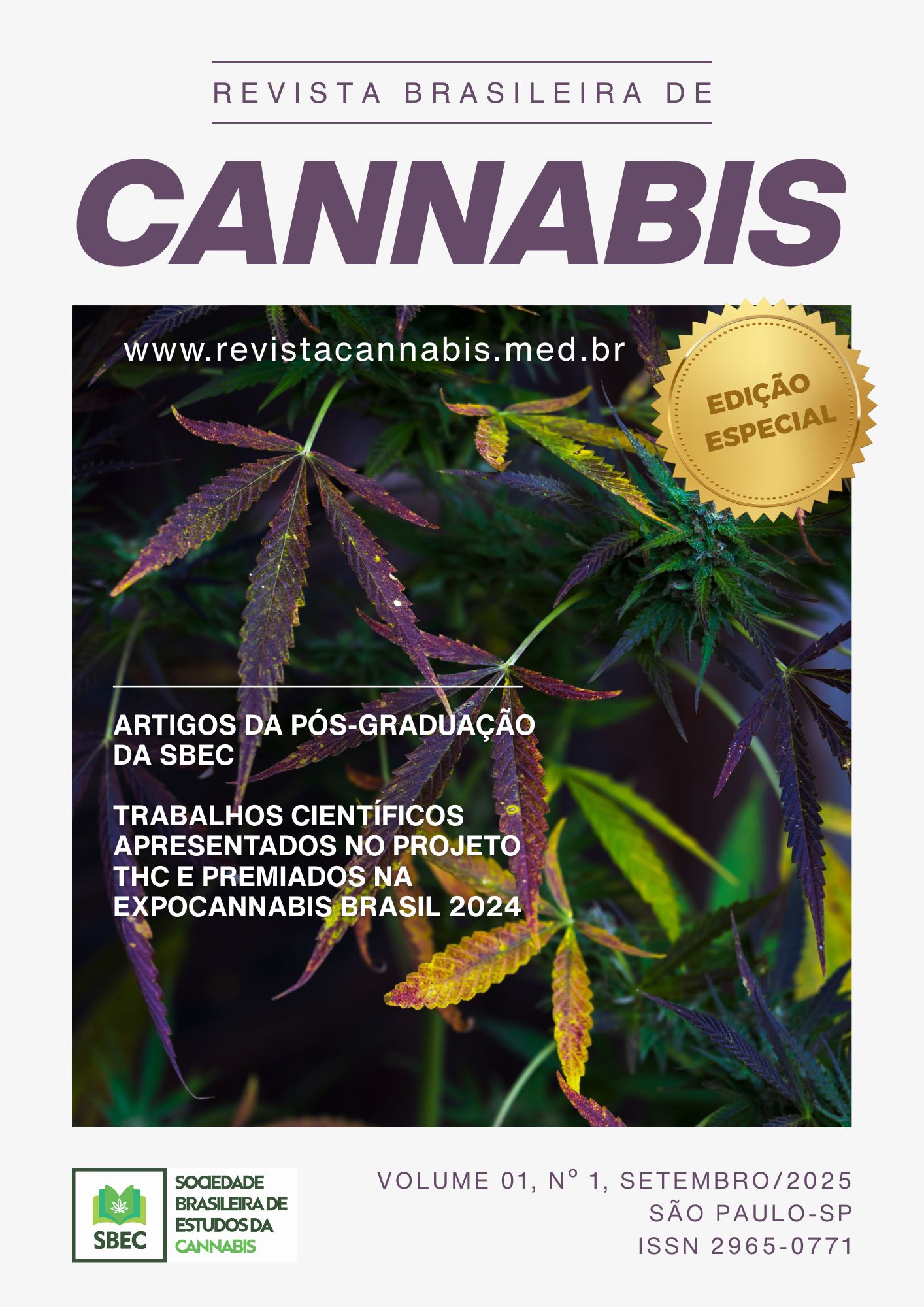CANABINOIDES SINTÉTICOS
DOI:
https://doi.org/10.58731/2965-0771.2025.122Abstract
Synthetic cannabinoids are laboratory-developed compounds, generally based on the structure of natural cannabinoids found in the cannabis plant. Their goal is to enhance therapeutic effects, reduce psychoactive effects, and expand knowledge about the endocannabinoid system. The main derivatives include hexahydrocannabinol (HHC), obtained by hydrogenation of THC and associated with psychotropic effects and antitumor activity; Δ8-THC, an isomer of Δ9-THC, which has a lower affinity for CB1 receptors and, therefore, milder effects; and THC-O-Acetate, produced by acetylation, resulting in a compound with more potent psychoactive effects. These analogs can be obtained through processes such as isomerization, hydrogenation, and acetylation, also involving additional steps for purification and isolation of the product. Although they have scientific and pharmacological relevance, the search for such compounds has given rise to recreational substances of abuse, such as Spice and K9, which reinforces the importance of control and responsible research.
Keywords: Synthetic cannabinoids; THC; K9; Spice; HHC.
References
ADAMS, R. et al. Structure of Cannabidiol, XII. Isomerization to Tetrahydrocannabinols. Journal of the American Chemical Society, v. 63, n. 8, p. 2209-2213, 1 ago. 1941.
ADAMS, Roger. Marihuana Active Compounds. Roger Adams. C07D311/80. USA2419937A. 27 mar. 1944, 6 mai. 1947.
AHMED, S. A. et al. Minor oxygenated cannabinoids from high potency Cannabis sativa L. Phytochemistry, v. 117, p. 194–199, 19 jun. 2015.
ALVES, V. L. et al. The synthetic cannabinoids phenomenon: from structure to toxicological properties. A review. Critical Reviews in Toxicology, v. 50, n. 5, p. 359-382, 27 maio 2020.
CASTANETO, M. S. et al. Synthetic cannabinoids: Epidemiology, pharmacodynamics, and clinical implications. Drug and Alcohol Dependence, v. 144, p. 12-41, 1 nov. 2014.
CAHN, R. S. LXXXVI. Cannabis Indica resin. Part II. Journal of the Chemical Society, p. 630-638, 1931.
HANUŠ, L. O. et al. Phytocannabinoids: A unified critical inventory. Natural Product Reports, v. 33, n. 12, p. 1357-1392, 1 dez. 2016.
KHAN, M. I. et al. The Therapeutic Aspects of the Endocannabinoid System (ECS) for Cancer and their Development: From Nature to Laboratory. Current Pharmaceutical Design, v. 22, n. 12, p. 1756-1766, 2016.
KRUGER, J. S.; KRUGER, D. J. Delta-8-THC: Delta-9-THC’s nicer younger sibling? Journal of Cannabis Research, v. 4, n. 4, jan. 2022.
LEE, Y. R.; XIA, L. Efficient one-pot synthetic approaches for cannabinoid analogues and their application to biologically interesting (-)-hexahydrocannabinol and (+)-hexahydrocannabinol. Tetrahedron Letters, v. 49, n. 20, p. 3283–3287, 12 maio 2008.
MARK, A. S. Hydrogenation of cannabis oil. Mark Andrew Scialdone. A61K36/185. US9694040B2. 09 maio 2016, 04 jul. 2017.
RAZDAN, R. K. Chemistry and structure-activity relationships of cannabinoids: an overview. The Cannabinoids: Chemical, Pharmacologic, and Therapeutic Aspects. [s.l.] p. 63–78, 1984.
WOLLNER, H. J. et al. Isolation of a Physiologically Active Tetrahydrocannabinol from Cannabis Sativa Resin. Journal of the American Chemical Society, v. 64, n. 1, p. 26-29, 1 jan. 1942.
WOOD, T. B. et al. III.- Cannabinol. Part I. Journal of the Chemical Society, Transactions, v. 75, p. 20-36, 1899.
Downloads
Published
How to Cite
Issue
Section
License
Copyright (c) 2025 Revista Brasileira de Cannabis

This work is licensed under a Creative Commons Attribution 4.0 International License.





